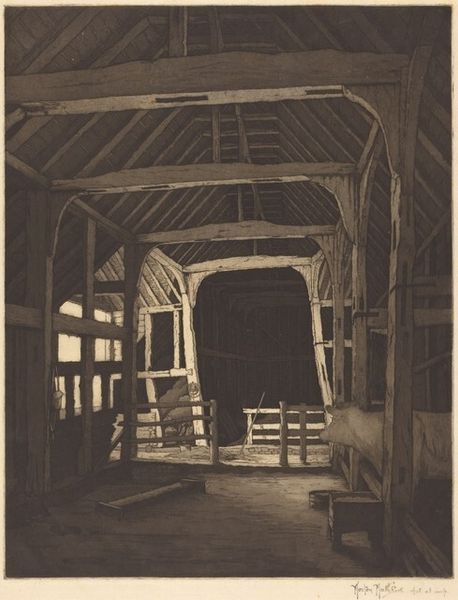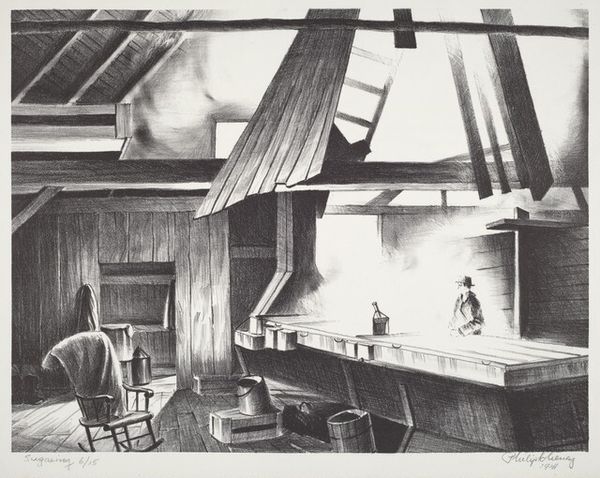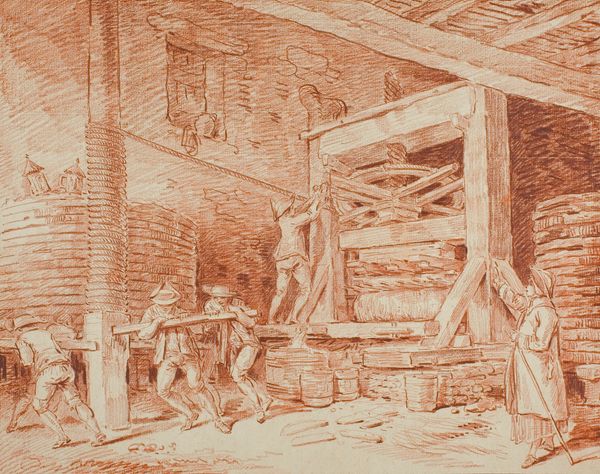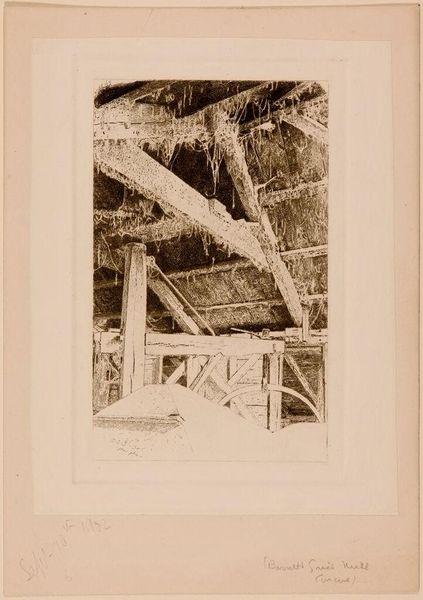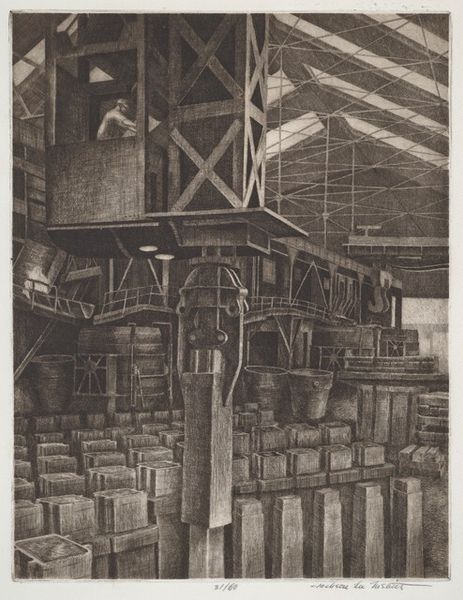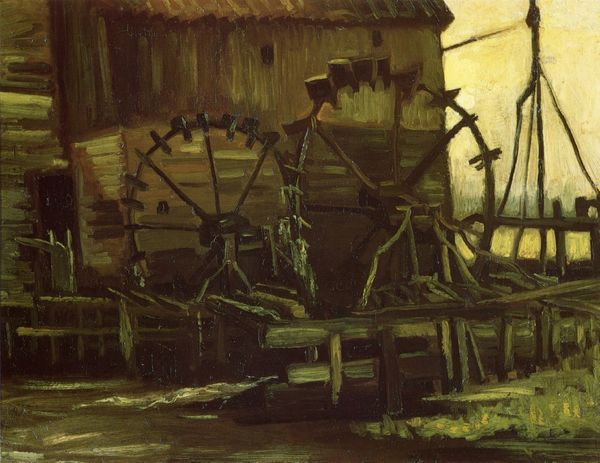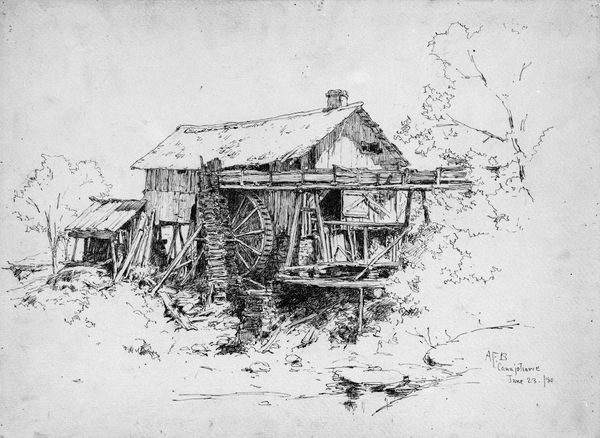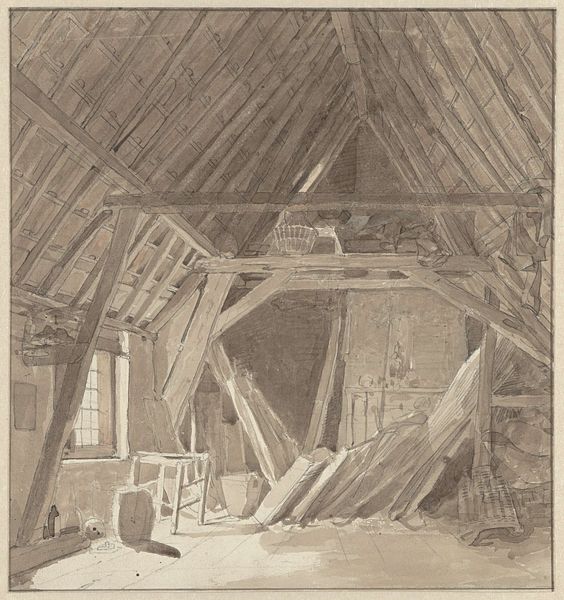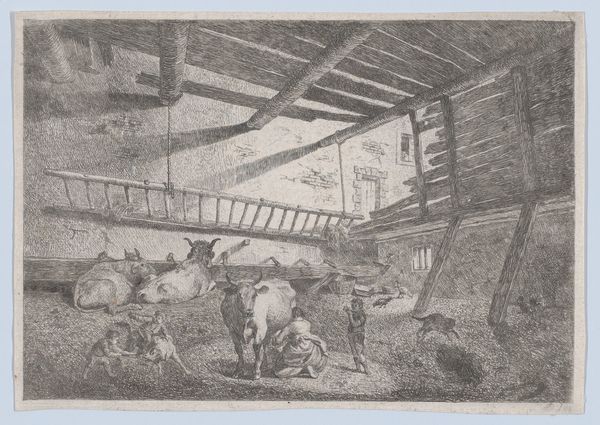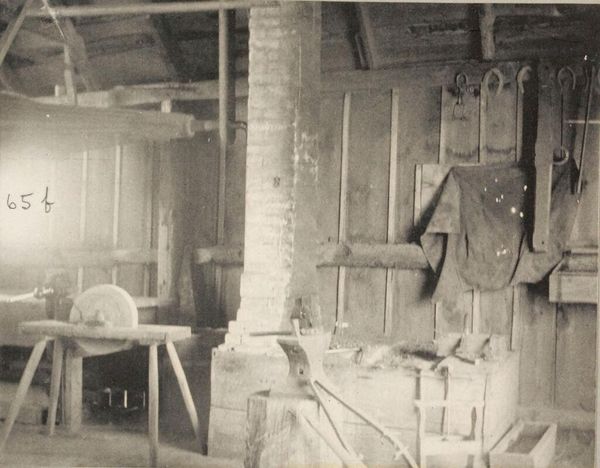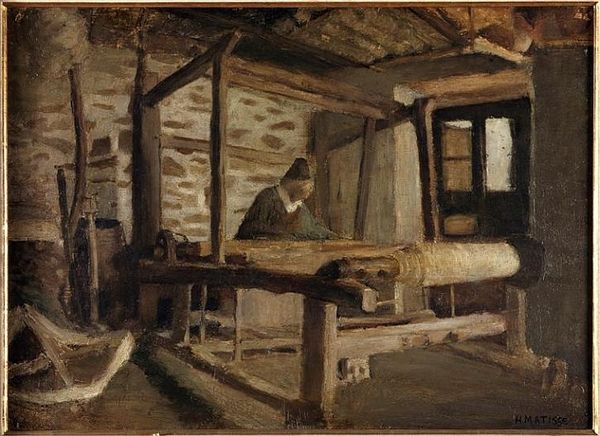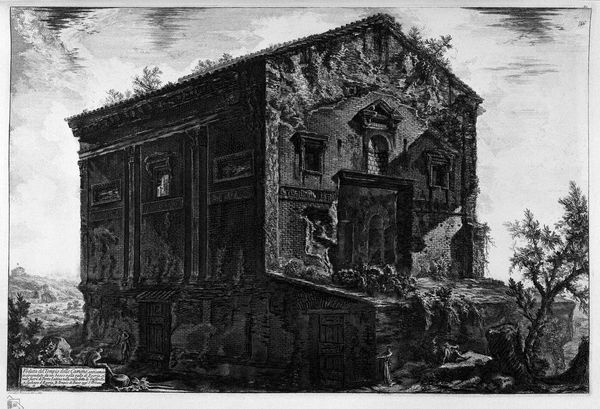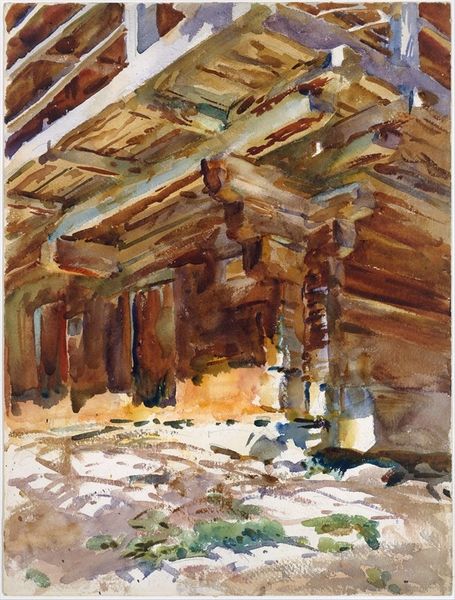
painting, oil-paint, architecture
#
painting
#
oil-paint
#
oil painting
#
watercolor
#
architecture
Copyright: Public domain
Curator: Let's consider this evocative artwork by Paul Kane titled "Interior of a Ceremonial Lodge," painted in 1846 using oil on canvas. Editor: It’s striking how the limited palette creates this heavy atmosphere—almost suffocating. You immediately sense a somber and ritualistic space, dominated by these muted browns and grays. Curator: Kane masterfully employs a triangular composition, guiding the viewer's eye from the fire pit to the apex of the lodge roof. The texture is palpable; you can almost feel the roughness of the timber and woven materials. Observe the intricate carving on the storage chests. Semiotically, these act as visual markers denoting social standing. Editor: But we need to acknowledge Kane's role as a European artist documenting Indigenous culture. His romantic lens inevitably shapes the narrative. The dim lighting, the carefully arranged objects—it feels like a staged tableau for a Western audience, rather than an accurate representation of lived experience. There’s a power dynamic at play. Curator: While I concede your point, one must also appreciate the detail with which Kane captures the architectural ingenuity and material culture of the lodge's construction. The geometric forms and their arrangement within the space establish a clear visual order. Note how each form speaks to function within a hierarchical organization of form. Editor: Agreed, the architectural details are important. Yet we can’t ignore that it depicts a specific Indigenous space and ceremony filtered through a colonizer's perspective, obscuring its true meaning and use. What ceremonies are being conducted and for whom are never clarified by Kane. Whose voice has been made voiceless by romantic aestheticizing of cultural artefacts? Curator: It's an unresolved tension. However, one must acknowledge Kane’s attention to detail, the linear precision of the construction details, and his application of painterly techniques to evoke depth and spatial relationship. The symmetry and geometrical relations construct Kane's understanding of formal order and symbolic content. Editor: A European order, certainly. But looking beyond the formalism helps reveal what has been repressed and what ideological narrative is further promoted. Even as Kane captures details, the narrative of the piece enforces a particular perception of civilization, as viewed from Europe. Curator: Perhaps. But consider his deft use of chiaroscuro, the dramatic contrast of light and shadow that builds drama and compositional integrity to draw one's attention inward, visually and emotionally. Editor: Indeed. A complexity to admire for its use of shadow to create space for questions regarding art and ethics.
Comments
No comments
Be the first to comment and join the conversation on the ultimate creative platform.
